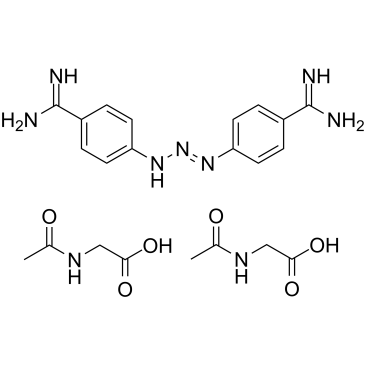Field detection of resistance to isometamidium chloride and diminazene aceturate inTrypanosoma vivaxfrom the region of the Boucle du Mouhoun in Burkina Faso
A. Sow, I. Sidibé, Z. Bengaly, T. Marcotty, M. Séré, A. Diallo, H.S. Vitouley, R.L. Nebié, M. Ouédraogo, G.K. Akoda, P. Van den Bossche, J. Van Den Abbeele, R. De Deken, V. Delespaux, A. Sow, I. Sidibé, Z. Bengaly, T. Marcotty, M. Séré, A. Diallo, H.S. Vitouley, R.L. Nebié, M. Ouédraogo, G.K. Akoda, P. Van den Bossche, J. Van Den Abbeele, R. De Deken, V. Delespaux
Index: Vet. Parasitol. 187(1-2) , 105-11, (2012)
Full Text: HTML
Abstract
A longitudinal study assessed the chemoresistance to isometamidium chloride (ISM) and diminazene aceturate (DA) in the region of the Boucle du Mouhoun in Burkina Faso. A preliminary cross-sectional survey allowed the identification of the 10 villages with the highest parasitological prevalences (from 2.1% to 16.1%). In each of these 10 villages, two herds of approximately 50 bovines were selected, one being treated with ISM (1mg/kg b.w.) and the other remaining untreated as control group. All animals (treated and untreated herds) becoming infected were treated with DA (3.5mg/kg b.w.). In total, 978 head of cattle were followed up. Fortnightly controls of the parasitaemia and PCV were carried out during 8 weeks. The main trypanosome species was Trypanosoma vivax (83.6%) followed by Trypanosoma congolense (16.4%). In two villages, less than 25% of the control untreated cattle became positive indicating no need to use prophylactic treatment. These two villages were not further studied. Resistance to ISM was observed in 5 of the remaining 8 villages (Débé, Bendougou, Kangotenga, Mou and Laro) where the relative risk (control/treated hazard ratios) of becoming infected was lower than 2 i.e. between 0.89 (95% CI: 0.43–2.74) and 1.75 (95% CI: 0.57–5.37). In contrast, this study did not show evidence of resistance to DA in the surveyed villages with only 8.6% (n=93) of the cattle relapsing after treatment. Our results suggest that because of the low prevalence of multiple resistances in the area a meticulous use of the sanative pair system would constitute the best option to delay as much as possible the spread of chemoresistance till complete eradication of the disease by vector control operations.
Related Compounds
| Structure | Name/CAS No. | Molecular Formula | Articles |
|---|---|---|---|
 |
diminazene aceturate
CAS:908-54-3 |
C22H29N9O6 |
|
A validated and stability indicating HPLC method for analysi...
2013-06-01 [Drug Res. (Stuttg.) 63(6) , 300-4, (2013)] |
|
A sensitive and reproducible in vivo imaging mouse model for...
2015-02-01 [J. Antimicrob. Chemother. 70(2) , 510-7, (2015)] |
|
Inhibition of spermidine/spermine N1-acetyltransferase activ...
2014-07-01 [Arthritis Rheumatology 66(7) , 1723-33, (2014)] |
|
Analysis of energy generation and glycolysis pathway in dimi...
2012-08-01 [Jpn. J. Vet. Res. 60(2-3) , 51-61, (2012)] |
|
Profiling the anti-protozoal activity of anti-cancer HDAC in...
2015-12-01 [Int. J. Parasitol. Drugs Drug Resist. 5 , 117-26, (2015)] |